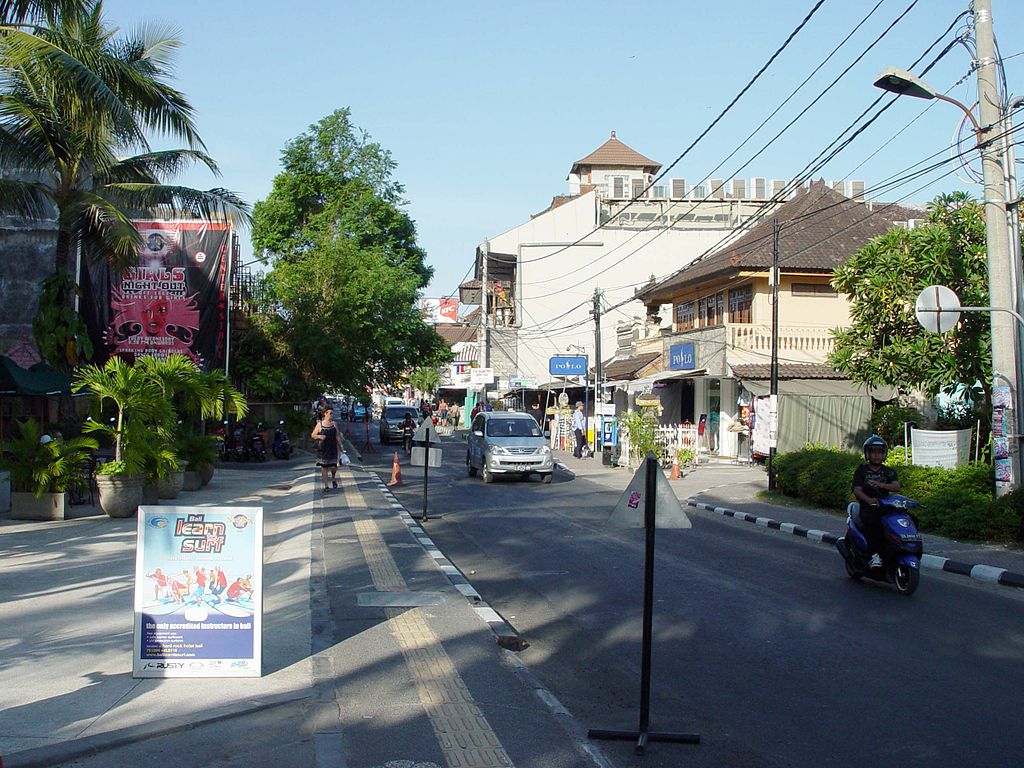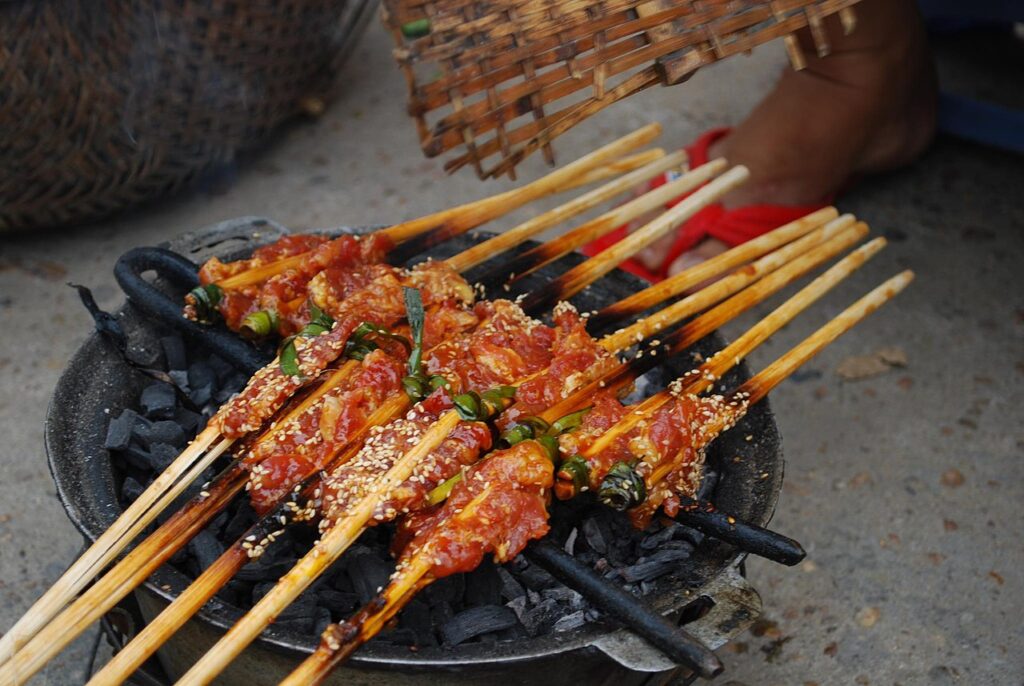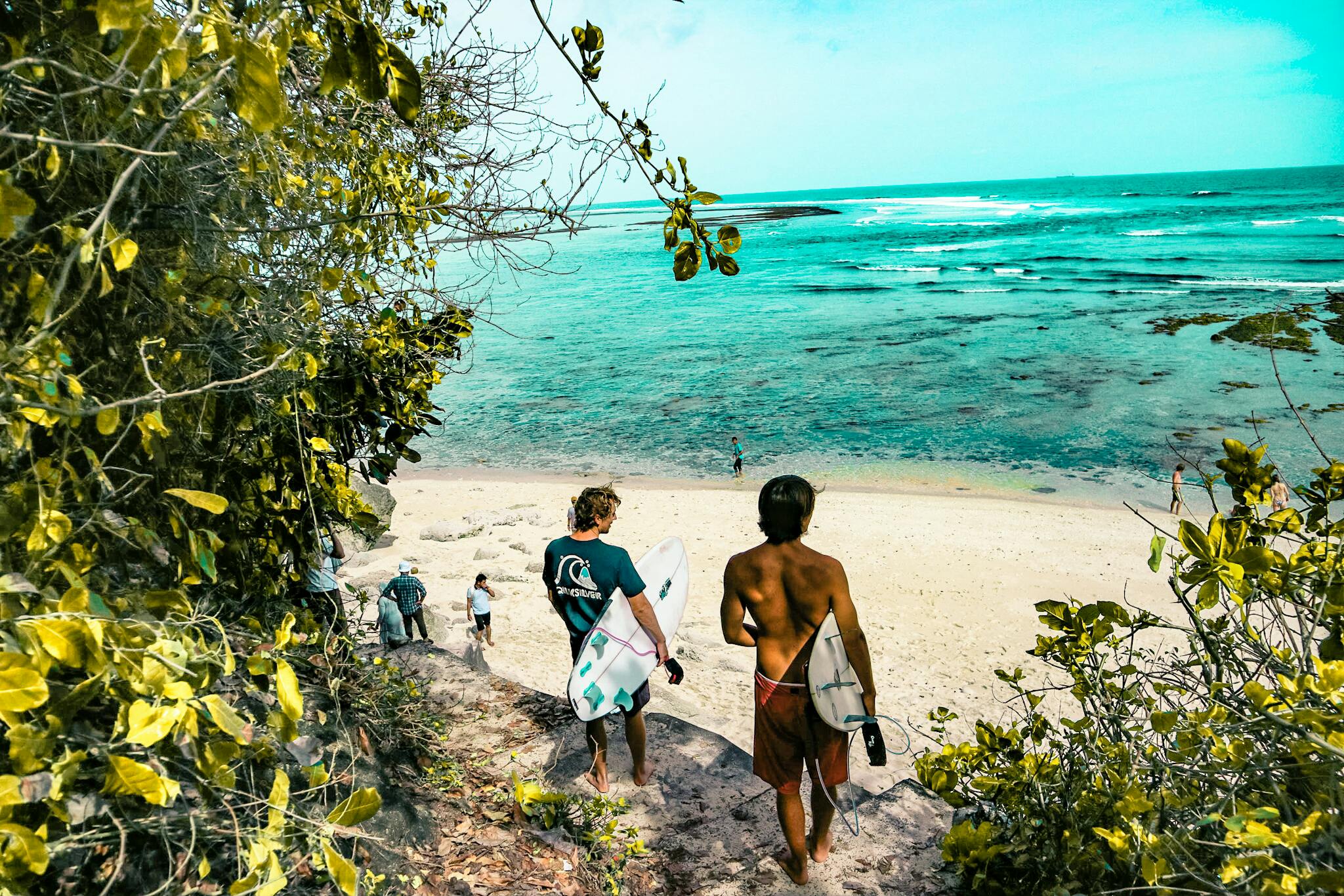Look, I get it. You’ve been scrolling through Instagram, drooling over those perfect Bali sunset shots, and thinking there’s no way you can afford that tropical paradise life. Well, guess what? I’m here to tell you that’s complete nonsense.
I’ve spent months in Bali on what most people would consider pocket change, and I’m about to spill all my secrets. You don’t need a trust fund or a sugar daddy to experience the magic of this Indonesian gem. You just need to know where to look, what to avoid, and how to think like a local instead of a tourist with “PLEASE OVERCHARGE ME” written on your forehead.
Getting There Without Breaking the Bank
Flight Hacks That Actually Work
Here’s the thing about flights to Bali – timing is absolutely everything. I learned this the hard way when I booked a flight three days before departure and paid more than my monthly rent. Don’t be me.
Book your flights 2-3 months in advance for the sweet spot between availability and pricing. I’ve consistently found the best deals during this window, and trust me, I’ve booked more Bali flights than I care to admit.
The cheapest months to fly? April, May, September, and October. You’ll dodge the peak season crowds and save serious cash. Plus, the weather’s still amazing – who needs perfection when you’re saving hundreds of dollars?
Pro tip: Use flight comparison sites like Skyscanner or Google Flights, but always book directly with the airline. Those third-party bookings can turn into nightmares if anything goes wrong, and Murphy’s Law loves travelers.
Budget Airlines That Don’t Suck
- AirAsia: My personal favorite for Southeast Asian routes. Their seats aren’t exactly business class, but hey, you’ll survive a few hours for those savings.
- Jetstar: Australian-based budget airline with decent Bali connections
- Scoot: Singapore’s budget option that’s surprisingly reliable
Word of warning: Budget airlines love their hidden fees like I love overpriced airport coffee. Pack light, bring your own snacks, and read the fine print. That $200 flight can quickly become $350 if you’re not careful.
Accommodation: Sleep Well, Spend Less

Hostels Aren’t Just for College Kids
Remember when hostels meant sketchy bunk beds and questionable hygiene? Those days are long gone, my friend. Bali’s hostel scene has evolved into something actually enjoyable.
I stayed at Capsule Pod Boutique Hostel in Canggu for $12 a night and felt like I was in a spaceship (in the best way possible). The pods have privacy, the common areas are Instagram-worthy, and you’ll meet fellow budget travelers who actually know what they’re doing.
Top budget-friendly areas:
- Canggu: Surfer vibes, great hostels, reasonable food prices
- Ubud: Cultural heart, plenty of budget guesthouses
- Sanur: Quieter, more local feel, excellent value for money
Homestays: The Ultimate Local Experience
Want to really stretch your budget? Skip the hotels entirely and stay with local families. I found incredible homestays for $8-15 per night through platforms like Booking.com and Airbnb.
Mrs. Wayan in Ubud charged me $10 a night and included breakfast, laundry service, and endless stories about Balinese culture. Try getting that at a Marriott 🙂
Food: Eat Like a Local, Save Like a Pro

Warungs Are Your Best Friend
Forget those overpriced beachfront restaurants targeting tourists. Warungs (local food stalls) serve authentic Indonesian food that’ll make your taste buds dance for under $2 per meal.
My go-to order? Nasi Campur – it’s basically a sampler platter of whatever’s cooking that day. You’ll get rice, vegetables, meat or tempeh, and usually some spicy sambal that’ll clear your sinuses for free.
Best warung hunting spots:
- Local markets (especially morning markets)
- Residential areas away from tourist zones
- Places packed with locals (always a good sign)
- Street corners where motorbikes cluster
Street Food Adventures
I know what you’re thinking – “But what about food poisoning?” Look, I’m not going to lie and say it never happens. But in my experience, the busy stalls with high turnover are usually safer than that fancy restaurant that’s been reheating the same pasta all day.
Must-try street foods:
- Gado-gado: Indonesian salad with peanut sauce
- Satay: Grilled meat skewers (get the pork if you’re not Muslim – it’s incredible)
- Bakso: Meatball soup that’s comfort food at its finest
- Es Campur: Shaved ice dessert perfect for hot afternoons
Smart Shopping for Snacks
Hit up the local Circle K or Indomaret convenience stores for snacks, water, and basics. A large bottle of water costs about $0.30 compared to $2 at tourist spots. Stock up and save your money for experiences, not overpriced Pringles.
Transportation: Getting Around Without Getting Ripped Off

Motorbike Rentals: Freedom on Two Wheels
Renting a motorbike is hands-down the cheapest way to explore Bali. For $3-5 per day, you get complete freedom to explore at your own pace. Just make sure you’re comfortable riding – Balinese traffic can be… interesting.
Essential motorbike tips:
- Always wear a helmet (it’s the law and your brain is important)
- Get an international driving permit before you travel
- Check the bike thoroughly before leaving the rental shop
- Take photos of any existing damage
I once got charged $50 for a scratch that was already there because I didn’t document it. Learn from my expensive mistake.
Bemo and Local Buses
For longer distances, bemos (shared minivans) are dirt cheap but require patience. They leave when full, not on schedule, so bring a book or download some podcasts.
The Trans Sarbagita bus system connects major tourist areas for under $1. It’s clean, air-conditioned, and a great way to people-watch while saving money.
Ride-Sharing Apps
Grab works in most of Bali and offers fixed pricing so you won’t get the “tourist tax” that taxi drivers love to apply. A 30-minute ride typically costs $3-5, which beats negotiating with drivers who see dollar signs when they spot your pale skin.
Activities and Attractions: Fun on a Shoestring

Free Natural Wonders
Bali’s natural beauty doesn’t charge admission, and that’s where you’ll find the real magic anyway.
Sekumpul Waterfall requires a bit of hiking, but the entrance fee is only $1.50 and the experience is priceless. I spent an entire afternoon there for less than the cost of a Starbucks latte back home.
Rice terraces in Jatiluwih or Tegallalang offer incredible photo opportunities. Some charge small entrance fees ($1-3), but others are completely free if you know where to look.
Temple Hopping on a Budget
Most temples charge minimal entrance fees ($1-3), but they’re worth every rupiah. Tanah Lot gets crowded with tour groups, but visit during sunrise or late afternoon for fewer crowds and better lighting.
Pro tip: Many temples offer sarong rentals, but bringing your own saves money and ensures you’re not wearing something that’s been on hundreds of other tourists.
Beach Life for Less
Skip the expensive beach clubs and find your own slice of paradise. Balangan Beach has incredible waves, cheap warungs, and virtually no crowds during weekdays. A beer costs $1.50 instead of $8 at those fancy Seminyak spots.
Hidden gem alert: Green Bowl Beach requires a steep walk down, but that keeps the crowds away and the prices reasonable.
Money-Saving Strategies That Actually Work
Bargaining Without Being Obnoxious
Bargaining is expected at markets, but there’s an art to it. Start at about 30% of the asking price and work your way up. Be friendly, smile, and remember that $2 difference might matter to you, but it probably matters more to them.
I once spent 20 minutes negotiating over 50 cents for a t-shirt. Was it worth it? Probably not. Pick your battles and keep perspective.
ATM Wisdom
Use ATMs attached to actual banks rather than random ones in tourist areas. They offer better exchange rates and are less likely to eat your card. BCA, Mandiri, and BNI are reliable options.
Important: Always decline the ATM’s offer to convert to your home currency. Let your bank handle the conversion – it’s almost always better rates.
Avoid Tourist Traps Like the Plague
Those “authentic Balinese cooking classes” in Ubud for $50? Skip them. Ask your homestay host to teach you instead – they’ll usually do it for free or the cost of ingredients, and it’s way more authentic.
FYI, anything advertised specifically to tourists is probably overpriced. Seek out experiences locals actually enjoy.
Travel Insurance: Don’t Skip This
Look, I get it – insurance seems like a waste when you’re trying to save money. But one motorbike accident or bout of food poisoning can cost more than your entire trip budget.
I use World Nomads for coverage that actually makes sense for budget travelers. It’s way cheaper than dealing with medical bills in a foreign country, trust me.
Sample Daily Budgets That Work
Ultra-Budget ($15-20/day)
- Accommodation: Hostel dorm or homestay ($8-12)
- Food: Warungs and street food ($4-6)
- Transportation: Motorbike rental ($3-5)
- Activities: Free beaches and hiking ($0-2)
Comfortable Budget ($25-35/day)
- Accommodation: Private room in guesthouse ($12-18)
- Food: Mix of warungs and mid-range restaurants ($8-12)
- Transportation: Motorbike plus occasional Grab ($5-8)
- Activities: Temple visits and paid attractions ($3-7)
Slightly Splurge ($40-50/day)
- Accommodation: Nice guesthouse or budget hotel ($18-25)
- Food: Restaurant meals with occasional splurges ($12-18)
- Transportation: Flexible options including day tours ($8-12)
- Activities: Organized tours and experiences ($10-15)
Common Mistakes That’ll Drain Your Wallet
The Airport Money Exchange Trap
Never, ever exchange money at the airport. The rates are terrible, and you’ll kick yourself later. Get just enough to cover transport to your accommodation, then find a proper money exchanger in town.
Falling for “Authentic” Tours
Those $80 volcano sunrise tours? You can do the same thing independently for about $15 including transport and entrance fees. Don’t let anyone convince you that you need a guide to watch the sun come up :/
Overpacking Tourist Areas
Seminyak and Kuta have their charm, but you’ll pay triple for everything. Base yourself in less touristy areas and visit the hotspots for day trips instead.
Not Having Local Currency
Many places don’t accept cards, and those that do often add fees. Keep cash on hand for warungs, temples, and transportation. Small bills are your friend – breaking a 100,000 rupiah note for a $1 purchase gets annoying fast.
Final Thoughts: Making Bali Dreams Reality
Here’s the truth nobody wants to tell you: Bali doesn’t have to be expensive. The Instagram-perfect version you see online? That’s marketing, not reality. The real Bali – the one with incredible sunsets, friendly locals, amazing food, and life-changing experiences – is absolutely accessible on a budget.
I’ve had some of my best Bali memories sitting in tiny warungs, chatting with locals, exploring hidden waterfalls, and watching sunrise from a random beach I stumbled upon. None of these experiences cost more than a few dollars.
Stop making excuses and start planning. Your dream Bali trip is waiting, and it doesn’t require winning the lottery. Just smart choices, realistic expectations, and a willingness to embrace the unexpected.
IMO, the best travel experiences happen when you stop trying to recreate someone else’s Instagram feed and start creating your own adventure. Bali’s waiting for you – budget and all.
Safe travels, and don’t forget to try the nasi campur!










